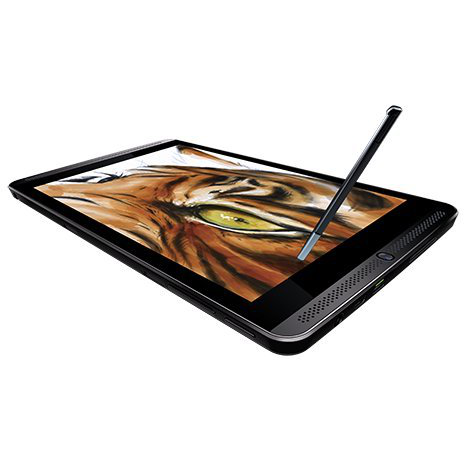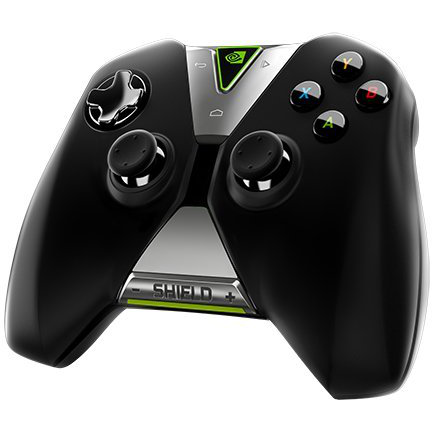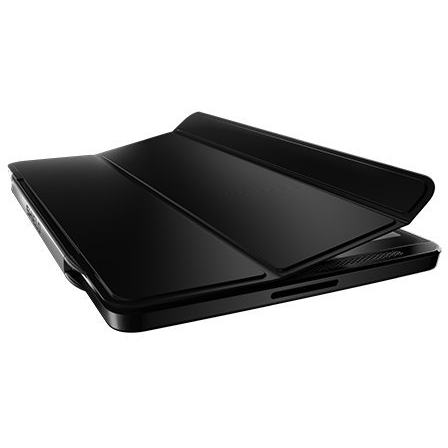Nvidia Shield Tablet And Shield Controller Review
The Shield Tablet, powered by Nvidia’s Tegra K1 SoC, deftly handles browsing and media playback duties. Combining it with the wireless Shield Controller transforms the 8-inch device into an exciting mobile gaming platform.
The Games
If the Shield Tablet is to be considered a great gaming device, it needs access to a large library of quality titles. Fortunately, the Android ecosystem has a vast array of touch-enabled games, immediately accessible on the Google Play Store. Adding the Shield Wireless Controller, or any Bluetooth controller, opens up even more possibilities. Nvidia claims there are more than 400 Tegra-optimized touch- and controller-based games for Android, like GT Racing 2, War Thunder and several Grand Theft Auto titles, along with a growing list of games that have been specifically enhanced for Tegra K1. Nvidia provides a list of compatible games on the Shield website.
Both Half Life 2 and Portal look better running on Tegra K1 thanks to several bonus features, including bump mapping, environment mapping, flashlight shadow maps, specular highlights, motion blur and higher-quality texture filtering. Rochard supports 1080p rendering versus 720p for Tegra 4. The lighting model used for Pure Chess is equivalent to the PS4 version of the game and also supports depth-of-field and bloom effects. Anomaly 2 includes PhysX support, and Talos Principle adds full dynamic shadows for all objects, parallax texture mapping, specularity and reflections and geometry environments with greater detail.
Nvidia also provides a feature called Gamepad Mapper, which adds game controller support to native Android touchscreen games. Players can create custom gamepad mapping profiles and share them with their friends.
PC gamers gain access to more than 120 officially supported GameStream-ready PC titles. Assassin’s Creed IV: Black Flag, Batman: Arkham Origins, Battlefield 4, Call of Duty: Ghosts, Far Cry 3 and Titanfall are just a few, with a full list available from Nvidia. Additional games may also work if a Bluetooth keyboard and mouse are used instead of a game controller.
Nvidia Grid is currently limited to 18 games, including Borderlands, Borderlands 2, Race Driver Grid, Saints Row: The Third, The Witcher 2: Assassins of Kings and Trine 2.
It will be interesting to see what impact Tegra K1 and its Kepler architecture have on mobile gaming. Supporting both OpenGL 4.4 and DirectX 12, in addition to OpenGL ES 3.1, should make it much easier for developers to port PC and game console titles to Android devices with Tegra K1. One example is Trine 2: Complete Story, which requires Tegra K1 and comes bundled with the Shield Tablet. With full OpenGL support, it allowed Frozenbyte to quickly port the PC version of the game using the same OpenGL render path, complete with PhysX support.
Will we see an influx of mobile games from the Xbox 360 and PS3 catalogs, or even new titles, with some of the detail dialed back, launching alongside the PC and console versions? I asked Manish Sirdeshmukh, Product Manager for Adreno Graphics and Gaming, if Qualcomm had any plans to support the full OpenGL specification like Tegra K1 in future Adreno GPUs. He stated that OpenGL 4.4 doesn’t add anything significant beyond what is already supported in OpenGL ES, and that he hasn’t seen any demand from game developers to support the full OpenGL specification. It seems the significance of Kepler’s arrival in mobile will ultimately be determined by its market penetration.
Get Tom's Hardware's best news and in-depth reviews, straight to your inbox.
Current page: The Games
Prev Page Grid, ShadowPlay And Twitch Next Page Benchmark Suite, Methodology And System Specs-
blubbey Those GPGPU benchmarks are ridiculous in comparison. It looks like a great bit of kit from what I've seen so far. A die shrunk Maxwell should be fantastic. Maybe even a lower clocked version just for power consumption? It'll still perform as well, if not better than the K1 at 750MHz (assuming 2 SMMs) I'd assume.Reply -
Memnarchon "Based on these results, Tegra K1 must be “a neural net processor; a learning computer” sent back through time to destroy all of the other SoCs that could lead a rebellion in the post-apocalyptic future."Reply
Lol this is epic! xD
Anyway, great and unique review. Especially for the so many GPGPU benchmarks.
Nvidia tablet at $299 seems to be a great buy. -
aberkae If maxwell brings double the performance per watt on the same node the next tegra chip on 20 nm node should be a home run for the companyReply -
deftonian Impressive, but I feel it's still missing that "umph" to get me to buy this and carry it around as an added device, next to my phone (Note 3). Maybe I just don't game enough on the android market or steam. Either way, I think it is impressive for a mobile gaming device and all the things it offers. I think they've started a great line and hope it grows into a successful tablet/gaming brand.Reply -
aberkae If maxwell brings double the performance per watt on the same node the next tegra chip on 20 nm node should be a home run for the companyReply -
gio2vanni86 The streaming a game while i'm at my friends house using my PC at home is what has me very interested. Plug into his TV and play amazing games he can only dream of. I'm in.Reply -
vithrell Just wait for Intel's Core M. It wont match the price (CPU alone will cost $300), but in fanless tablet form factor it wont have worthy competitor. Early GPU benchmarks give Core M 55k graphics score in Ice Storm, so more than 1.5x more power than Tegra K1. AND you can run full Windows on it. I wish Nvidia took x86 path with its cpu cores.Reply


